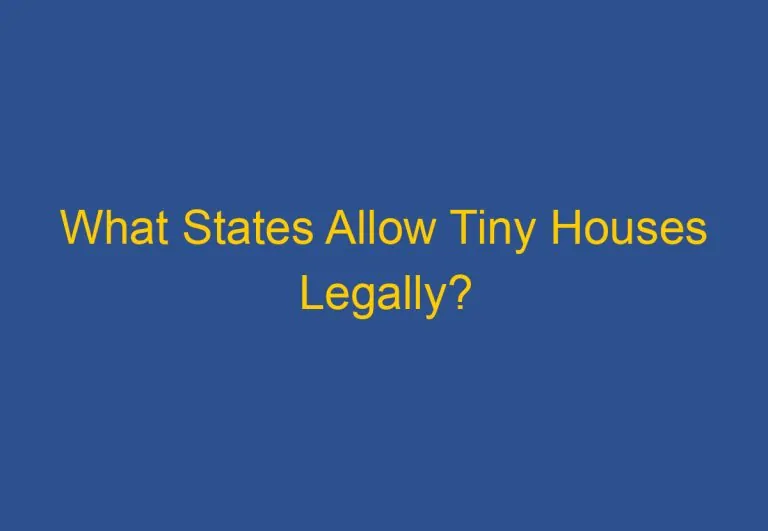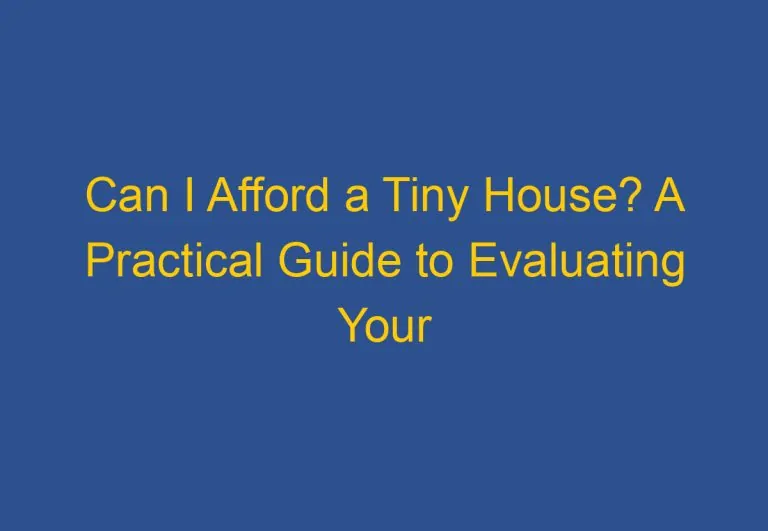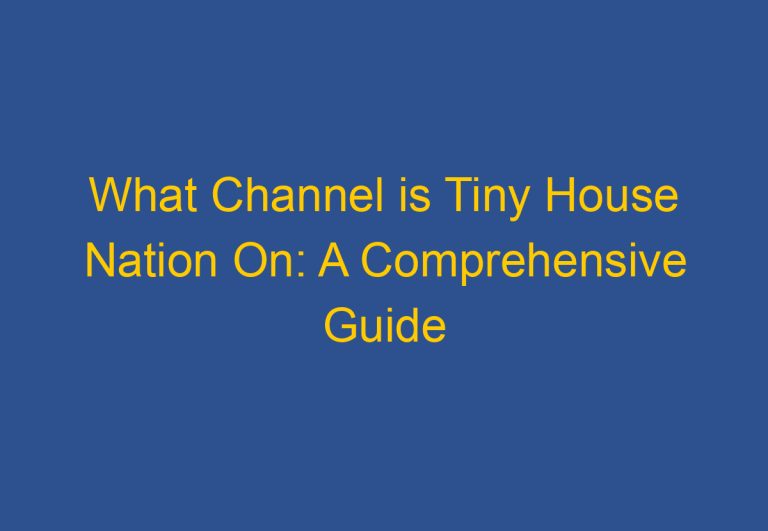Can I Build a Tiny House on My Land? A Guide to Understanding Zoning Laws and Building Codes
Building a tiny house on one’s land is a dream for many people. The idea of downsizing and simplifying their lives while also having the freedom to customize their living space is appealing to many. However, before embarking on this journey, it’s important to understand the legal implications and requirements of building a tiny house on one’s land.
The first step in building a tiny house on one’s land is to research the local zoning laws and regulations. Zoning laws vary by state, county, and municipality, and it’s essential to ensure that building and living in a tiny house is legal in the intended location. Some areas have restrictions on the size and type of structures that can be built on residential properties, while others may require permits or inspections before construction can begin.
Once the legal requirements are understood, the next step is to determine the ideal location for the tiny house. Factors such as natural light, accessibility, and proximity to utilities should be considered. Additionally, it’s important to have a clear understanding of the intended use of the tiny house, whether it’s for full-time living, vacationing, or as a guest house. With careful planning and research, building a tiny house on one’s land can be a fulfilling and rewarding experience.
Understanding Tiny House Regulations
When it comes to placing a tiny house on a property, it’s important to understand the various regulations that may apply. This section will cover zoning laws and building codes, as well as the permits and legal requirements that may be necessary.
Zoning and Land Use
Zoning and land use regulations vary widely depending on the location. It’s essential to research the specific zoning ordinances and land use regulations in the area where the tiny house will be placed. Some areas may have embraced the tiny house movement and have relaxed zoning laws, while others may have strict regulations or building codes that impact the placement and construction of tiny homes.
Before embarking on a tiny living journey, it’s crucial to understand the zoning regulations and land use regulations in the specific location where you plan to establish your tiny home. Consulting with a real estate attorney can help you understand local zoning laws and regulations.
Building Codes and Standards
Building codes and standards also vary depending on the location. It’s essential to research the specific building codes and standards in the area where the tiny house will be placed. Building codes and standards ensure that the structure is safe and meets certain standards of quality.
Some areas may have adopted specific codes for tiny homes, while others may require the same standards as traditional homes. It’s crucial to research the building codes and standards in the specific location where you plan to establish your tiny home.
In conclusion, understanding the regulations and legal requirements that apply to tiny homes is essential before embarking on a tiny living journey. Researching specific zoning laws, land use regulations, building codes, and standards is crucial to ensure that the tiny home is placed legally and safely. Consulting with a real estate attorney can also be helpful in navigating the legal requirements for placing a tiny home on land.
Planning and Constructing Your Tiny House
Design and Location Considerations
Designing a tiny house requires careful consideration of the available space and the desired style. Before beginning the construction process, one should research the various styles and designs available and select one that suits their needs. The location of the tiny house is also a crucial factor. For instance, if one plans to build a tiny house on wheels, they should check the parking restrictions and regulations in their area. Additionally, if one plans to build a tiny house on a foundation, they should consider the zoning laws and building restrictions in their area.
Securing Permits and Navigating the Construction Process
Before starting the construction process, one should secure all the necessary permits. The permit process varies depending on the location, so it is essential to research the local building codes and regulations. Some areas may require additional permits, such as septic or plumbing permits. It is also essential to have a clear understanding of the construction process, including the necessary steps and budget required for each stage.
During the construction process, it is crucial to ensure that all safety standards are met. This includes proper insulation, stairs, and windows. One should also consider incorporating sustainable features, such as solar panels and composting toilets, to minimize the environmental impact of the tiny house.
Overall, planning and constructing a tiny house requires careful consideration of various factors, including design, location, permits, and construction process. By doing thorough research and consulting with professionals, one can successfully build their dream tiny house on their land.
Frequently Asked Questions
What are the zoning regulations for building a tiny house on my property?
Zoning regulations vary by state, county, and municipality. Before building a tiny house on your land, it is important to research the local zoning regulations to ensure that it is legal to do so. Some areas have restrictions on the minimum square footage or dwelling types, while others may not allow tiny houses at all.
Are there any specific building codes I need to comply with for tiny houses in my area?
Yes, tiny houses must comply with the International Code Council’s standards, including size and safety features. It is important to research the specific building codes in your area to ensure that your tiny house meets all requirements.
What is the minimum square footage required for a dwelling in my region?
The minimum square footage required for a dwelling varies by region and can be found in your local zoning regulations. In some areas, the minimum square footage may be as low as 200 square feet, while in others it may be higher.
Can I legally add a guest house to my existing property?
Whether or not you can legally add a guest house to your existing property depends on local zoning regulations. In some areas, guest houses may be allowed as long as they meet certain requirements, while in others they may not be allowed at all.
What permits are necessary for constructing a tiny house on my land?
Permits required for constructing a tiny house on your land vary by region and can include building permits, electrical permits, plumbing permits, and more. It is important to research the specific permits required in your area to ensure that you are in compliance with all regulations.
How does the cost of building a tiny house compare to purchasing a pre-built one?
The cost of building a tiny house versus purchasing a pre-built one can vary greatly depending on a number of factors, including the size and complexity of the house, materials used, and location. In general, building a tiny house can be more affordable than purchasing a pre-built one, but it can also require more time and effort.










